Would you like a Viking for lunch? Care for a freshly baked shoe cream?
When it comes to food names in Japan, there’s an entire category of menu items that are constantly tripping up visitors because the names look like English but definitely are not. They are Japanese inventions that are based on English words, or parts of English words, but do not exist in standard English.
Linguists refer to such constructions as “pseudo-loanwords” or “pseudo-anglicisms,” but in Japan they are known as wasei eigo — “made-in-Japan English.”
Wasei eigo is not limited to food, of course. In every corner of the Japanese language, one finds terms that have been imaginatively constructed by Japanese speakers using the building blocks of loanwords derived from English, but which have novel meanings that may diverge significantly from the original English.
It’s fun, and certainly helpful before a trip to Japan, to get to know your way around wasei eigo. Learning the names of foods that look like English (but are not) will also be a kindness to your Japanese friends and customers, who may not realize that these terms aren’t English and can’t be readily understood by native English-speakers.
Here, we offer an introduction to the ten most confusing food names in Japan.
Table of Contents
1. Baikingu バイキング (derived from “Viking”)
In Japan, an all-you-can-eat, self-serve buffet is called a “Viking.” Written in katakana as バイキング and Romanized as “baikingu,” it’s pronounced more like “biking” and is an invention coined more than 70 years ago by Tokyo’s prestigious Imperial Hotel.

According to the hotel’s Japanese-language website, Tetsuzō Inumaru, the hotel’s president at the time, made a trip to Europe in 1957 to scout for new restaurant ideas. Impressed by the Scandinavian-style buffets he saw in Copenhagen, he returned determined to introduce the concept to Japan. But he worried that the name “smorgasbord,” which is derived from the Swedish words “smörgås,” (an open-faced sandwich) and “bord” (table), would be too hard for Japanese to say and struggled to come up with a name that would work in Japan.
The following year, just when the hotel was ready to launch the first buffet restaurant in Japan, an American swashbuckling film called “The Vikings,” featuring major stars like Kirk Douglas, Tony Curtis and Janet Leigh, was drawing crowds to the luxurious Hibiya movie theater around the corner from the hotel. Inumaru seized on the popularity of the film, and the ready association of Vikings and Scandinavia, and named the new restaurant the “Imperial Viking.” Very quickly, baikingu entered the Japanese lexicon to mean “buffet.”
2. Batā rōru バターロール (derived from “butter” and “roll”)
What do you imagine when you hear “butter roll?” A curl of butter? A buttered roll? Perhaps butter rolled into a log? But none of those describe what Japanese mean when they say what sounds like “butter roll.”
A batā rōru バターロール is one of the most common breads in Japan, a standard item in hotel breakfast buffets and routinely on offer in bakeries, supermarkets and even convenience stores. The basic recipe calls for a soft dough enriched with milk and butter, with the pieces rolled into a crescent shape before baking.
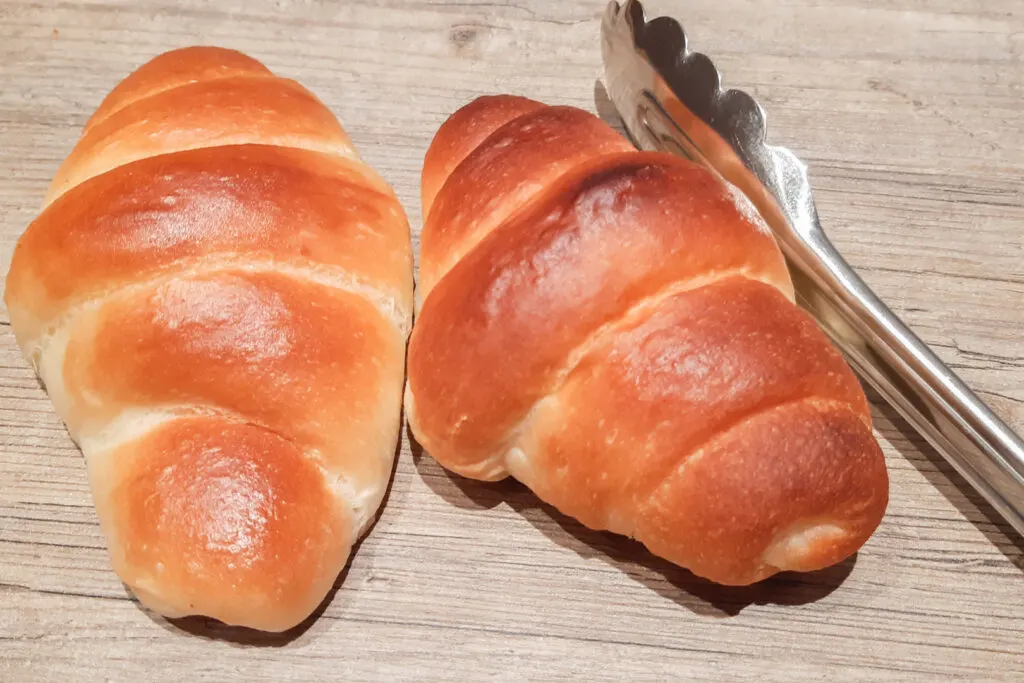
A native English speaker would describe these as a “crescent roll” or “dinner roll,” but never as a “butter roll” unless they had been living in Japan for a long time. (Long-term foreign residents of Japan, including me, very often forget what foods are called back home.)
3. Sofuto kurīmu ソフトクリーム (derived from “soft” and “cream”)
Soft-serve ice cream is a frozen dessert similar to ice cream but served at lower temperatures to be smooth and creamy.
In the United States, where the formula and machines to serve it were invented in the 1930s, “soft serve ice cream” gets shortened to “soft serve,” which is all you need say when ordering. But don’t try that in Japan. Ask instead for sofuto kurīmu (“soft” + “cream,” ソフトクリーム).
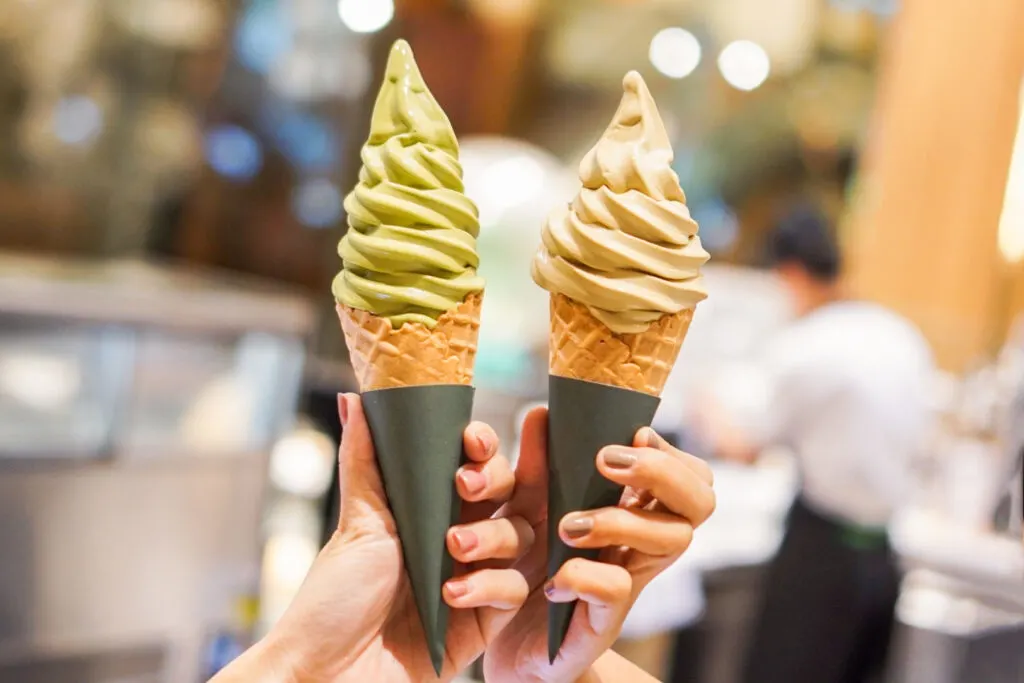
According to Nissei Corporation, the market leader in soft-serve ice cream in Japan, it was their company founder, Joji Tanaka, who brought the first soft-serve machine to Japan in 1951. Rather than trying to get Japanese consumers to wrap their tongues around the cumbersome four-word “soft serve ice cream,” he dropped the “serve” and “ice” and shortened the name to “soft cream.”
Japanese on travel overseas, not realizing that sofuto kurīmu is wasei eigo, often try, unsuccessfully, to order the frozen treat by asking for “soft cream.”
4. Amerikan doggu アメリカンドッグ (derived from “American” and “dog”)
An “American Dog” is a sausage on a stick that has been coated with batter and deep-fried, and is a Japanese invention. Although inspired by what’s called a “corn dog” in the United States, the ingredients are as different as the name.
A corn dog is a sausage (usually a hot dog) skewered lengthwise and coated with a thick layer of batter before it goes into the deep fryer. In Japan, the equivalent snack, which is often sold from temporary stalls at town and school festivals, and at convenience stores, is called an amerikan doggu (“American Dog,” アメリカンドッグ). This is presumably a nod to the country where the food is believed to originate, but the taste is very different from what you’d get in Chicago or St. Louis.
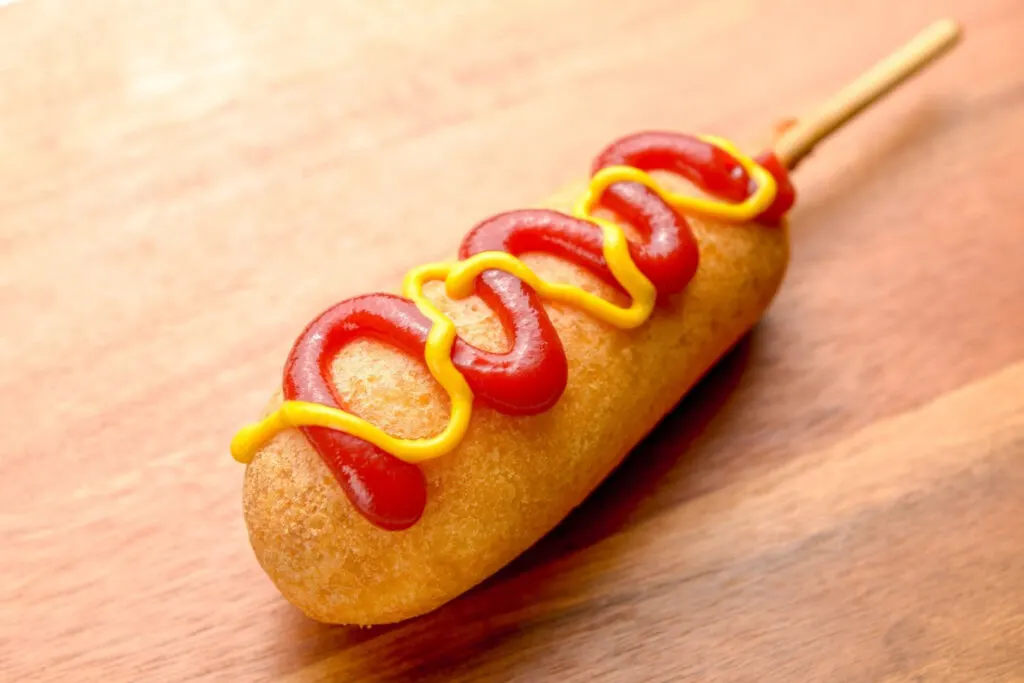
Unlike the traditional corn dog batter that uses a combination of cornmeal and flour, the batter for amerikan doggu is made of flour, eggs, sugar, baking powder, and milk or water. It’s sweet, like pancake mix, and doesn’t contain corn at all. And amerikan doggu are made with fish sausage instead of the pork, beef, chicken, turkey or combination sausages that are used for corn dogs.
Interestingly, on Japan’s northernmost island of Hokkaido, and in a few other regions, the same snack is called furenchi doggu (“French Dog,” フレンチドッグ) and often comes sprinkled with sugar.
5. Mōningu sābisu モーニングサービス (derived from “morning” and “service”
This is a uniquely Japanese breakfast special, served at small coffee shops and cafes when a cup of coffee or other drink is ordered. It may also be called mōningu setto (from “morning” + “set,” モーニングセット) and is often abbreviated to simply mōningu (“morning”).
This special menu set is offered only in the morning hours when there are generally fewer customers than in the afternoon. It may consist of a buttered toast and a hard-boiled egg, sometimes with a small salad or bowl of shredded cabbage, and is provided free or for a small supplementary charge with your cup of coffee.
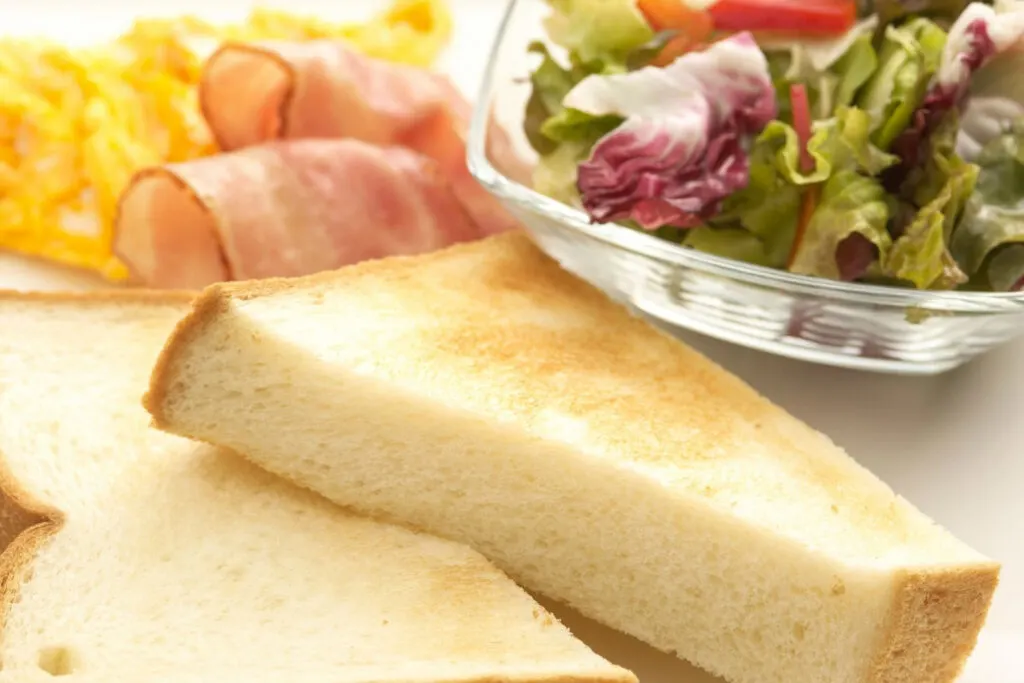
This practice, which started in the early post-war period, is only seen in some parts of Japan and is most common in the Tokai region (which includes Nagoya) and Kansai (which includes Osaka and Kyoto). Several towns and cities claim to be the place where “morning service” first appeared, including Ichinomiya in Aichi Prefecture and Hashima in Gifu Prefecture, but its origins have never been proved definitively.
Although it’s become difficult to find in the Tokyo area, as traditional kissaten (coffee shops) have given way to the international chains, the Japanese “morning service” is a fun and economical way to enjoy breakfast when traveling in Japan.
6. Shū kurimu シュウクリーム (derived from the French, “chou à la crème”)
What an English-speaker would refer to as a cream puff is, in Japan, called a shū kurimu (choux + cream, シュウクリーム), a name derived from the French “chou à la crème.”
Choux is a delicate pastry dough made with butter, water, flour and eggs, and is used in making many famous confections, including profiteroles, éclairs and chou à la crème, by far the most popular of the three in Japan.
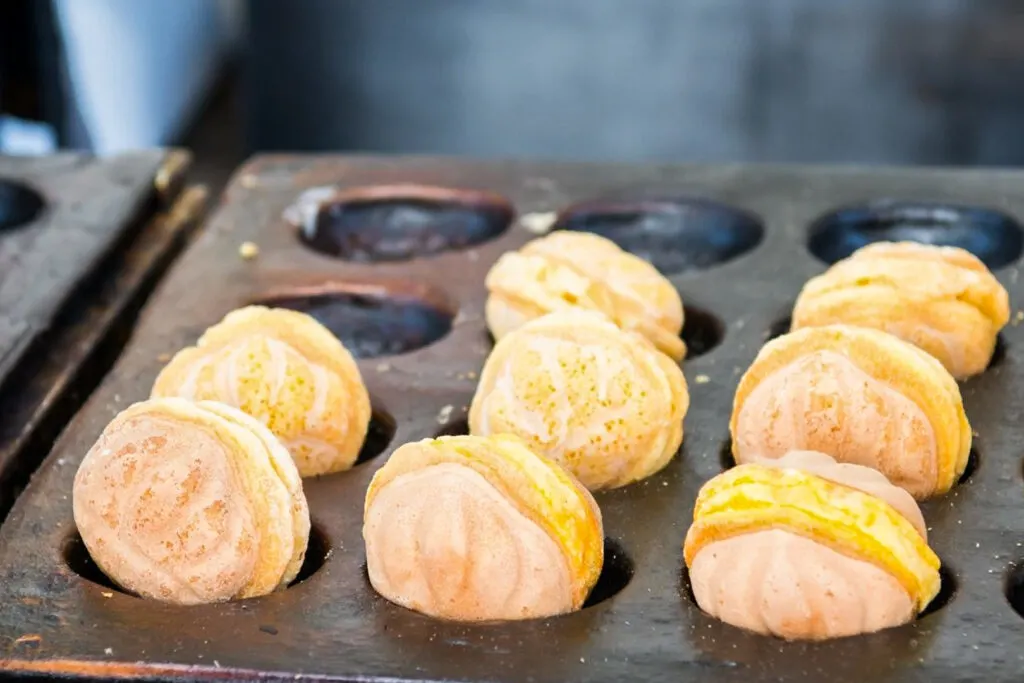
Shū kurimu are sold all over Japan, and in many creative flavors including matcha green tea, kinako (roasted soybean flour) and even sake. Definitely something to try on a visit to Japan!
7. Sutorēto tī ストレートティー (derived from “straight” and “tea”)
This is hot black tea taken “straight,” i.e., without milk or lemon.
Coffee can be ordered burraku ブラック, derived from the English word “black” and in this case meaning without cream or sugar, but burakku tī (“black” + “tea”) is a general descriptor, not a menu choice. It’s used to distinguish black tea from green tea, and suggests a blend without fragrance or other ingredients.
Should you prefer tea with milk, ask for miruku tī (“milk” + “tea,” ミルクティー). If you want tea with lemon, order remon tī (“lemon” + “tea,” レモンティー). Iced black tea is generally available in Japan during the summer months but is called aisu tī (“ice + “tea,” アイスティー), dropping the final “d” sound.
Iced coffee is more popular and is called aisu kōhī (“ice” + “coffee,” アイスコーヒー ). It’s almost always served with sweet syrup and condensed milk on the side to be added to taste.
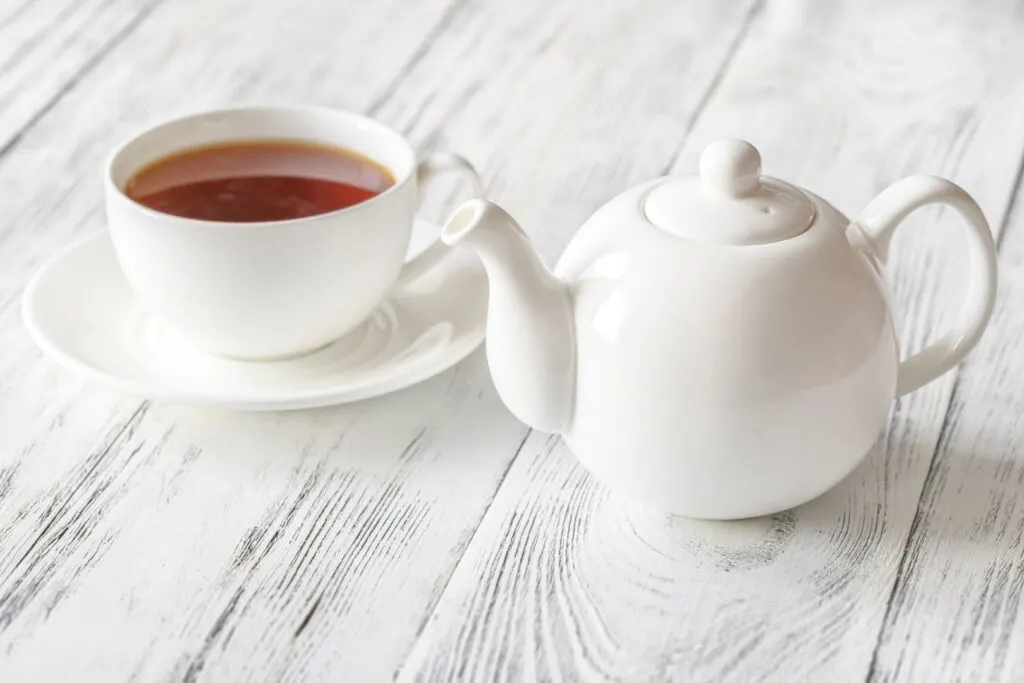
8. Dekorēshon kēki デコレーションケーキ (derived from “decoration” and “cake”)
This is a fancy, frosted whole cake with decorations, such as a cake to celebrate a birthday or other special occasion. The term is used mostly for a cake with two or more sponge layers and frosted with whipped cream or, less often, buttercream.
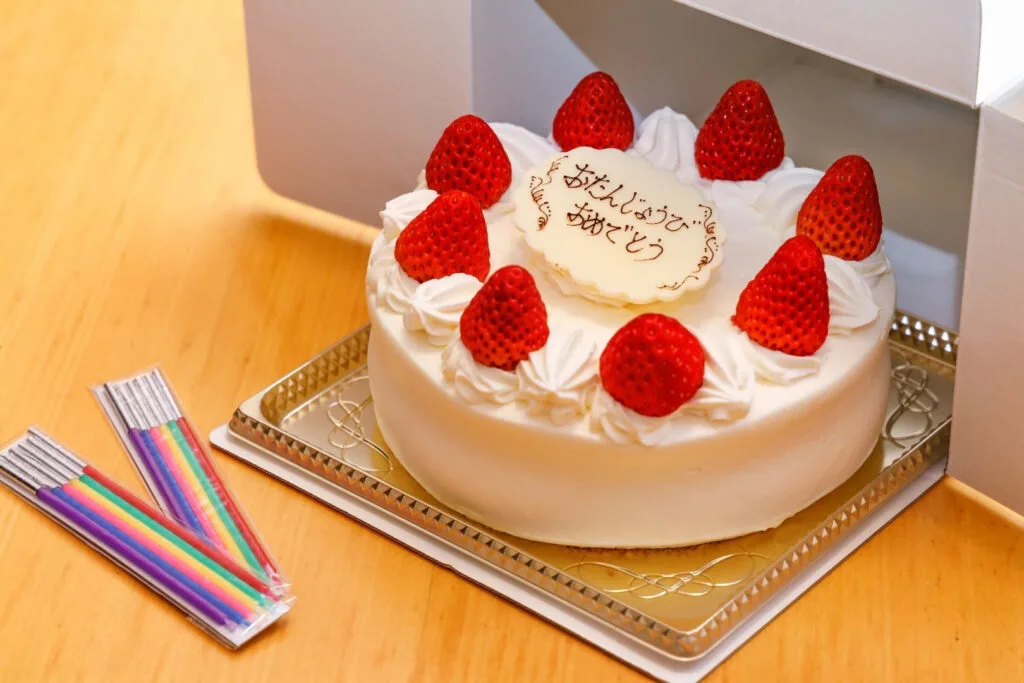
The size of such cakes is measured in a unit called gō (号), a remnant of the traditional shakkanhō (尺貫法) measurement system that was replaced in commerce by the metric system in 1958. A single gō unit is the equivalent of 3 centimeters.
Common cake sizes range from 4号 (pronounced “yongō” and measuring 12cm across, which is suggested for three to four people), to 8号 (said aloud as “hachi- gō”) suitable for up to 16 people (according to my local cake shop, which only offers large sizes by special order).
9. Furaido poteto フライドポテト(derived from “fried” and “potato”)
Japanese tourists overseas are often perplexed that their orders in English for “fried potatoes” nets them nothing but blank looks. What they’re after are the strips of deep-fried potato known as “French fries” in the United States (and most of Canada) and “chips” in the UK, Australia and New Zealand.
In Japan, however, they’re called furaido poteto (“fried” + “potato,” フライドポテ). This is wasei eigo, an abbreviation of the American English “French-fried potatoes” in which the “French” was dropped in favor of the final two components.
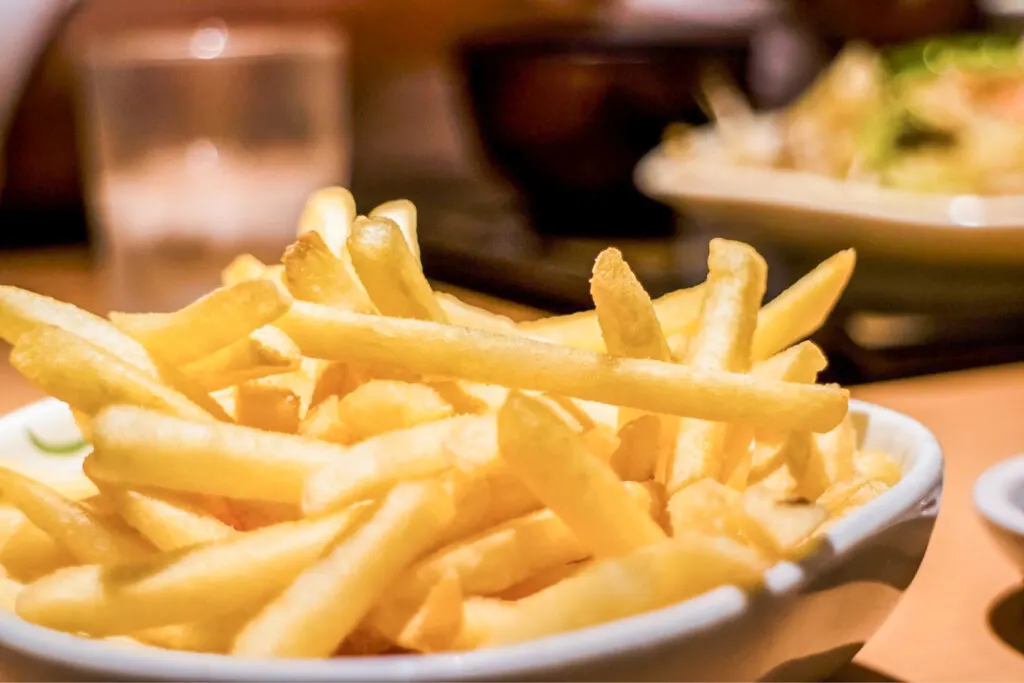
Japan has also invented its own variations on this classic Belgian treat, sprinkling the hot strips of deep-fried potato with traditional Japanese seasonings such as nori seaweed or bonito flakes.
10. Horumon ホルモン (not “hormone” but “offal”)
While horumon ホルモン is the Japanese word for “hormone,” used in medical and scientific contexts as well as common speech, the same word has a completely different meaning in Japan that doesn’t exist in English, and in fact may have nothing to do with English.
In yakiniku restaurants, where various meats are grilled at the table, as well as in restaurants specializing in hotpot dishes, you’ll often see horumon on the menu. In these cases, horumon refers to pork or beef offal, and may include such offerings as gari (esophagus), hatsu (heart), shibire (pancreas) and shiro (intestine).
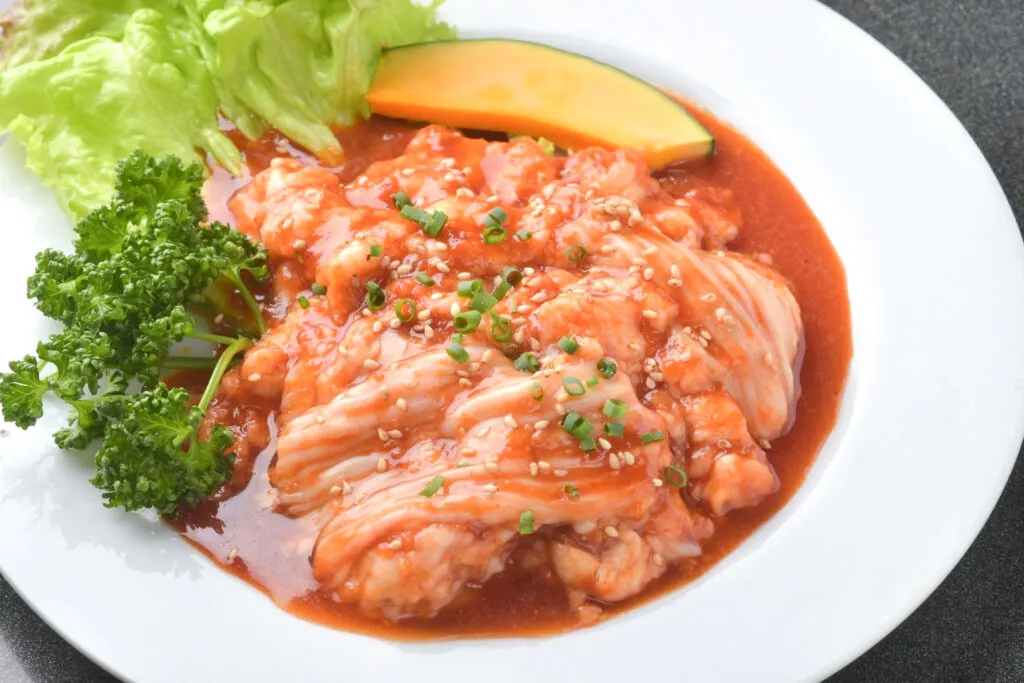
While there is some debate about the origin of this usage, one explanation has it that it came from the dialect of Japanese used in the Kansai region, where the slang term hōrumon 放るもん means “things to be thrown out.”
What’s your favorite ‘wasei eigo’ term? Any that left you stumped or confused on your travels in Japan?
Pin me for later
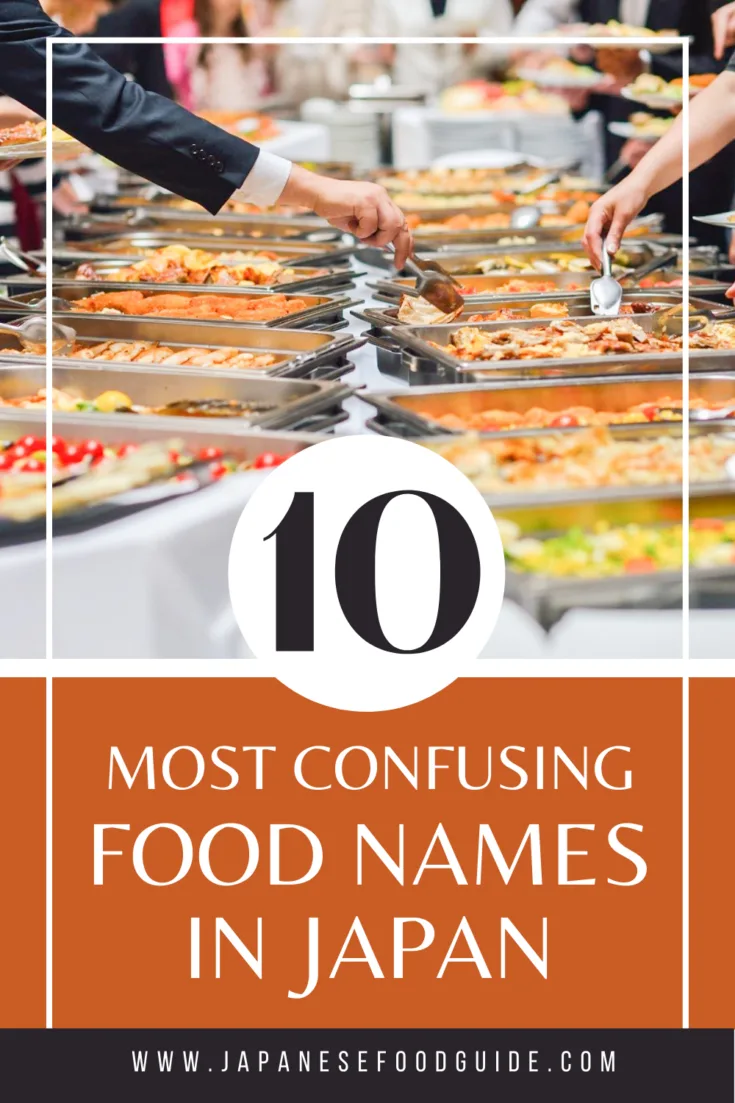
Alice Gordenker is a Tokyo-based writer. She started her career in journalism reporting from Washington, DC for food industry trade publications on regulation and legislation. Since relocating to Tokyo more than 20 years ago, Alice has made it her “life work” to provide insight on Japan through various media including newspapers, magazines, television and film.
She is delighted to be an early contributor to Japanese Food Guide, where she can once again focus on great things to eat, and how they are grown or made.

Thomas
Thursday 16th of June 2022
I've been living in Japan for faaaaaar tooooo long! And I have learned 80 % of my English here. I would have sworn "butter roll", "soft cream", "American dog", "morning service" and "fried potato" were words commonly known in English speaking contries. And I'm pretty sure I used them like the duck takes to water. But then, I wouldn't be too sure not to occasionally use "handy" and "smoking" in a way, every non-German would roll his/her eyes (at best). This article was - obviously - long overdue!
Lena Yamaguchi
Friday 13th of May 2022
I'm not a native English speaker so my first introduction to soft serve ice cream was in Japan. I always assumed soft cream was English until I tried writing an article in English about it several years ago.
By the way, if you want to get morning service in Tokyo you just need to visit Komeda's Coffee, a chain coffee shop that originated in Nagoya and has spread across the country. They serve morning service for free until 11:00. My favorite is the Ogura Toast!